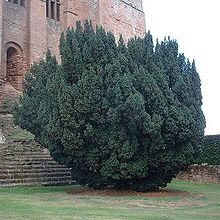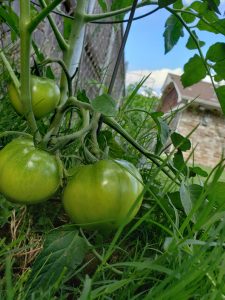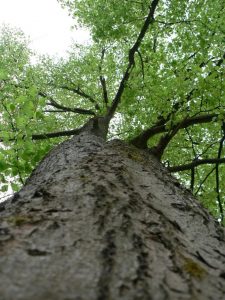THE FACT OR FICTION BEHIND ASLAN: RUNNING JOY
June 1, 2021
First, let me start by saying ASLAN: RUNNING JOY is a work of fiction. It isn’t a memoir based on fact. It’s made up. As a child, I read fiction dog and horse books voraciously, one after another after another. And, with each one, I wondered. “Is this dog/horse real?” Unfortunately, there was no internet for me to Google that information, but fortunately, today there is.
And here’s the answer about Aslan.
Yes. There was a real Aslan. Yes, the fictional Aslan in the book acts as closely to the real Aslan as I could get him. BUT…the book’s Aslan is fictional. People who knew the real Aslan and have read the book tell me that I pretty much pinned the tail on the dog when I brought him to life in the pages of the book. But…
No. He didn’t experience the life the fictional, bookish Aslan lives.
I got the real Aslan as an adult, and he and I began an agility journey that took us to six agility championships and the AKC Agility National Championships numerous times. He and I were bonded in a way I have never experienced with another dog. And he sparkled, especially on the agility course. His personality glittered like a disco ball in a world that needed that light.
But the real Aslan never lived with a 14-year-old Krissy. He never knew Peter, Mom, or Dad, who are all fictional.
There are a few other “real” dogs that make fictional cameos in ASLAN: RUNNING JOY. One is Honey, the beardie. The real Honey was a bundle of life. She lived every second aloud. And while her owner in the book, Mike, is fictional, I completely stole the relationship the real Honey had with her real human dad and slapped it into the book. Skip (Honey’s real dad) and Honey shared a love that was a wonder to behold. It had to be in the book.
Ruffis, the collie, was also real. In real life, after I got my kidney transplant when I was thirteen, my doctor told my parents it would be best to sell my then horse. My parents and I agreed, and yes, I was secretly guilty, just like Krissy in the book. And, yes, the hoof pick incident in the first chapter really happened and hastened my fear of my horse. (Who taught me to pick a horses’ hoof incorrectly anyway?) And, yes, I did agree to sell the horse if I could get a collie instead. My parents agreed, and Ruffis came into my life. (Some parts of chapter one that are fiction include Krissy and her mom’s relationship, watching Wickery leave, and Krissy’s temper over her conflicting emotion, among pretty much everything but what is mentioned above.)
Long story short, the real Ruffis and I went on to compete in obedience. There was no agility back then. You can find photos of the real Ruffis with his anteater’s nose on my website.
But, what happens to the fictional Ruffis in the book is all fiction. I even gave the fictional Ruffis personality traits I don’t remember the real Ruffis having.
I stole from the real Ruffis’ life with the story of Ruffis, Aslan, and the collar. A version of this story took place in real-life, only the collar belonged to my family’s terrier-mix, Tuffy, and Ruffis was the hero. The real incident happened in a similar manner to the fictional one, and even the ending where the two dogs’ relationships forever change played out in real life.
The fishing miracle in Chapter 6 is also a fictionalized version of a true story. Conflict has been added to that tale and neither Aslan nor I were there, but my brother really did experience that miracle.
Krissy is a fictional character, but her emotions and thoughts as she deals with her new status as a transplant patient are based on my experiences. I’ve pulled from my background as a 14-year-old transplant patient and infused the character of Krissy with that knowledge. However, Krissy is fictional. This ability for an author to pull from their own experience and put it into a fictional book is called #ownvoices, and it lends authenticity to the work.
When one of my early, pre-published readers got to the section where Mia bullies Krissy about her transplant, the reader told me, “That was a little much. No one would say those things.” Unfortunately, this is taken from reality. Some of what is said comes from my own experiences being bullied both as a teen and an adult, but most comes from a fellow Middle Grade student who also had a transplant. I came across her in the hall one day as I was leaving school late. She was cornered by three other kids who were spouting some of the cruel things I repeat in the book and threatening to beat her up. As I turned to fetch an adult to break up the brewing fight, a teacher appeared, and the poor girl was freed. At least for the time being. She disappeared from school shortly after that.
While some of the canine characters in the book come from real life, the human characters do not. Krissy’s friends, Violet, Jessica, and the not-so-hot Evan, are fiction. I will say that Violet’s loyalty (and her German Shepherd) do come from my real-life bestie, Danette. Peter also has elements of my real brother, Paul, and Peter even takes the career path my real brother took. But, at the end of the day, Peter is also fiction. Krissy’s parents, too, are fictionalized with bits of my real dad and much less of my real mom in the characters. And for my friends who compete in agility, all of the human agility competitors are completely fictionalized.
Other elements that are based on life experience include the Third Vault Veto, which is a real issue for people with disabilities who compete in agility, although the issue never had a name that I know of until I came up with the term. My years competing as a disabled handler play out in Krissy’s struggle to train Aslan. I’d like to think the agility elements of the book have a zing of authenticity, although everyone experiences and trains agility differently.
And for those wondering, there was never a real-life Cool. In fact, over the years, I’ve seen few, if any, agility dogs treated the way Cool is, although the rare bad human apple does exist. I’ve found those people usually don’t last long in the sport.
All authors get inspiration for their works of fiction from life. We talk about how we pull parts of people we know and put those characteristics into our fictional characters. This book is no different. While it is a true work of fiction, reality inspired some of the elements. But the one element that is most true to life is the character of Aslan himself. I wrote this book a little over a year after losing Aslan. It hurt in a healing sense to bring him back to life via my words. Now, though, whenever I miss him, I can always turn to the book’s pages and find him there, his high-pitched bark urging me to join him on the agility course once again.

OUR DIRTY LITTLE SECRET
March, 2018 (written circ. 1994)
It was something done in the veil of darkness after the neighbors had retreated from the muggy evening heat to their air-conditioned living rooms and prime-time viewing. It was not something to be conducted during daylight, and it has been kept secret—until now.
Perhaps humans enjoy displaying our strange behaviors—or perhaps we all possess an inner desire to come clean; regardless, I’ve chosen to expose our “dirty little secret” and openly confess to the citizens of the world.
My husband and I have painted our dead yews green.
The whole episode started this spring when five yews were planted in front of our home. According to the county ag agent in charge of yews, the planting was done correctly, and, because the yews were container grown bushes, three of them just died.
Funds were low and the season late when we realized there was no hope for the struggling bushes. Two of the smaller yews remained healthy and green, but the three larger bushes turned a sickly yellowish brown. Soon, all green disappeared from their needles. They stood, three lifeless and barren bushes in a line along the front of the house with the two lush, green yews.
Our choices were limited: pull up the dead yews and have gaping holes in the line of bushes or leave the brown yews alone—a stark symbol of our failure as horticulturists.
Then my ever-clever husband hit upon a third option: spray paint the brownish-yellow yews green. And thus, our plans for The Painting began.
We realized such a scheme would be deemed tacky by most, so it was decided The Painting would occur in the cover of darkness, at about 22 hundred hours. A trip to an out-of-town store for the spray paint would be necessary. After all, what if a local store clerk, in her desire to be helpful, asked us what the goods were for? To announce in one’s small home town the planned purpose would bring embarrassment upon our household. So, a trip to an impersonal store in another town was scheduled.
The plan was being carried off flawlessly when a hitch developed at the impersonal store. My husband and I stood in the spray paint aisle examining the varied hues of green.
“Here’s a green I think sounds perfect,” I said, pointing to a can of forest green with a satin finish. “This ‘forest’ color sounds promising.”
My husband, however, clutched his own can with a green lid. “This is on sale!” he exclaimed. “I think it’s a perfect match.”
I took the can from him, looking at the lid and color description. “It’s Kelly green. And what’s worse, it’s a gloss. We don’t want the yews to shine. No, this satin finish is a much better choice.”
My husband’s eyes rolled toward the ceiling. I could see hin computing the monetary difference between the paints. After a few seconds, the financial result was announced. “The forest green will cost us thirty cents more. Since we don’t even know if this will work, I think we should save the money.”
I’m a penny-pincher at heart, and my husband knows that. For the savings of thirty cents, his paint choice won, and we left for home with a can of glossy Kelly green.
That evening, after sunset, we snuck out to the front yard, flashlight and Kelly green in tow. The Painting was done silently, and in a matter of minutes, our dead yews looked green and vibrant. It was a triumph of paint technology.
I don’t know what our neighbors thought when they awoke the next morning to find our yews miraculously recovered overnight. Perhaps they guessed from the start. There were, after all, clues. The spray-painted yews were a few shades darker and bluer than the real yews. The dirt around the painted yews was the same color as the yews. And the worst part, the painted yews shone like newly waxed cars in the sun.
You may drive by and look at our dead yews if you would like. If the sun is shining, you will need your sunglasses for optimum viewing.

A City girl’s dream
march, 2018 (written circ. 1994)
As I write this, a dream is growing in my backyard. Four dreams, actually – all of them French mantilla butterhead lettuces.
Granted, it’s a weak start for a garden; but then, I’m a born and bred city girl. Neither my parents nor our neighbors would have ever dared take a till to their perfect, lush suburban lawns, so it’s not in my recent lineage to garden.
However, since graduating from college, I have had this hankering to try my thumb at vegetables, but my housing locations were never right for it – until now. Having recently moved to a rural, small town and a yard bigger than our car, I decided it was time to make a dream come true.
As spring neared, I checked out organic gardening books from the library. Soon, I had picked the perfect spot for my garden and had even chosen what to plant. I was limited in the vegetable choices because my husband, a known supporter of veggiecide, willingly only consumes a few things green – one of them being peas and the other, of all vegetables, lima beans.
Then the purchasing began: seeds, top soil, fertilizer, fence posts, chicken wire, seed starter pots, peat pots. My vegetable abhorring husband was patient as check after check flew off to seed companies.
In early spring, a friend arrived with his tiller. It was a banner day for me. The dream was about to take shape. After giving my husband instructions on the tiller’s operation, the friend and I stepped back to watch. It was obvious from the get-go the tiller had the better of my husband. His face screwed with frustration as he struggled against the beast to till row after row. Our friend turned to me and declared, “He looks like a city boy.” Which, of course, he is.
I forced my husband out to the plot of brown, lonely soil yesterday to proudly show off my growing produce.
“Here,” I said, hopping on my toes and pointing to a small corner of the fenced soil. “I have four lettuces growing!”
He squinted at the tiny, green flecks emerging from the ground. “Are you sure that’s not chickweed?” he asked.
“Of course not! That’s chickweed. Over there.” I pointed to another section of the garden.
“Isn’t that where you planted carrots?” he asked. “Where are the snap peas?”
“They were supposed to germinate here. I think I need to go back to the library and read more about peas.”
He stared at the colorless soil where the peas should have been. Then his eyes began darting across the garden, seeking his favorite vegetable. “Where are the lima beans?” His voice rose a pitch.
“Over there,” I said, nodding in a northerly direction.
“Where?” He squinted again.
“I think I’d better get over to the library,” I replied lamely.
He looked back at the four ragged lettuce heads struggling for existence in the barren garden. I could see him adding up the cost of the seeds, top soil, fencing and so forth in his head. I had done this previously and arrived at the exorbitant sum of well over ten dollars for each of my lettuce heads.
He didn’t comment on the expensive lettuce. He just smiled warmly at me and walked back toward the house humming the theme from the TV show “Green Acres.”
I know my neighbors walk by my leafless, little garden and smile as they mutter “City Girl.” And yes, it’s true, but my colorless garden looks like a city girl’s dream to me.

the tree
march, 2018 (written circ. 1982)
It stands,
Beaten and scarred —
Half-dead.
In its younger days
When it was lithe and green,
Some boys thought
It would be great fun
To play lumberjacks.
Soon they tired of their endeavor.
So it stood
Wounded and Bleeding —
Fighting.
When it was older
And the scars had turned ashen,
Some girls thought
It would be great fun
To put red spray paint
All over the ashen wounds.
Still it stood
Disfigured and Deformed –
Struggling.